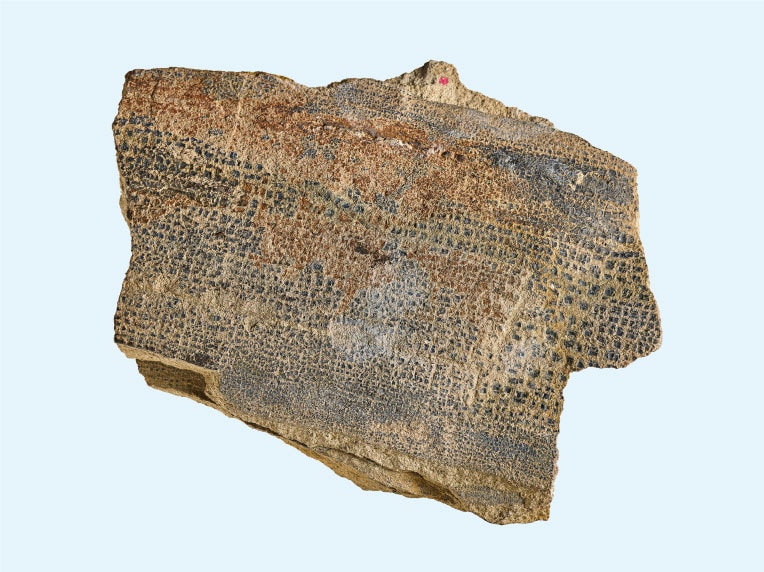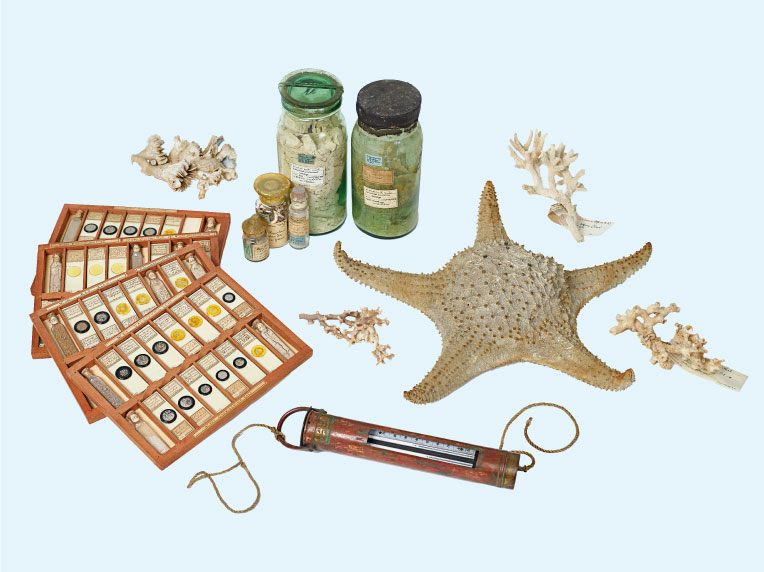

The third gallery of Treasures of the Natural World tells the stories of those who not only had a brilliant mind, but a brave heart and daring spirit. From Captain James Cook’s first voyage to Australia and New Zealand to Captain Robert Falcon Scott’s expedition to reach the South Pole and HMS Challenger’s 1872 exploration of the deep oceans. Each expedition yielded vital scientific evidence which was only attainable because these explorers dared to be pioneers. These inspiring stories of human endeavor adventure take place across vast oceans and remote lands. Leading to great discoveries in biology, oceanography and geology and vivid first-hand accounts and imagery of surprising new species, but ultimately a showcase of human endeavor and heart.
Highlights

南極木化石
碳化木
南極洲
石炭紀/三疊紀,約 3.23 - 2.01 億歲
這塊木化石是在斯科特上校的第二次遠征和全隊罹難的「新地探險」中收集所得,意義重大。它是證明南極曾有過森林的最早期證據之一,而且也證明了南極的氣候曾經比現在溫暖許多。


皇帝企鵝幼兒皮毛
南極洲
首三隻被研究的皇帝企鵝幼兒之一,這隻企鵝是斯科特上校團隊於 1902 年的發現號遠征中收集所得。這隻企鵝的發育階段證明了皇帝企鵝在既黑又寒冷的冬天產卵。而在「新地探險」旅程,斯科特上校打算收集企鵝蛋作進一步研究。

Southern Cassowary
Walter Rothschild was fascinated by the southern cassowary, a large flightless bird found in Australia and New Guinea. He kept a number of live specimens at the family home, Tring Park in Hertfordshire, and had them prepared as taxidermy when they died. Although Rothschild thought the birds’ different coloured markings indicated many species, we now know there are only three.


HMS Challenger expedition
With corals, samples and slides, these specimens represent the first major scientific investigation of the oceans. HMS Challenger left British shores in 1872 for a three-and-a-half-year voyage around the world, criss-crossing the oceans, from South America to the Cape of Good Hope, Antarctica to Australia, the Fiji Islands and Japan.
The wealth of evidence the expedition brought back evolutionized our knowledge of the deep sea at the time.

Microfossil Christmas card
Painstakingly created from microfossils by Arthur Earland (1866–1958), this slide spells out a Christmas greeting to his colleague Edward Heron-Allen (1861–1943). It reads ‘A.E. Xmas 1912’. Both men were micro palaeontologists at the Natural History Museum. They collaborated for 25 years and were responsible for analysing the foraminifera – small single-celled organisms – collected during Scott’s Terra Nova expedition to Antarctica.

